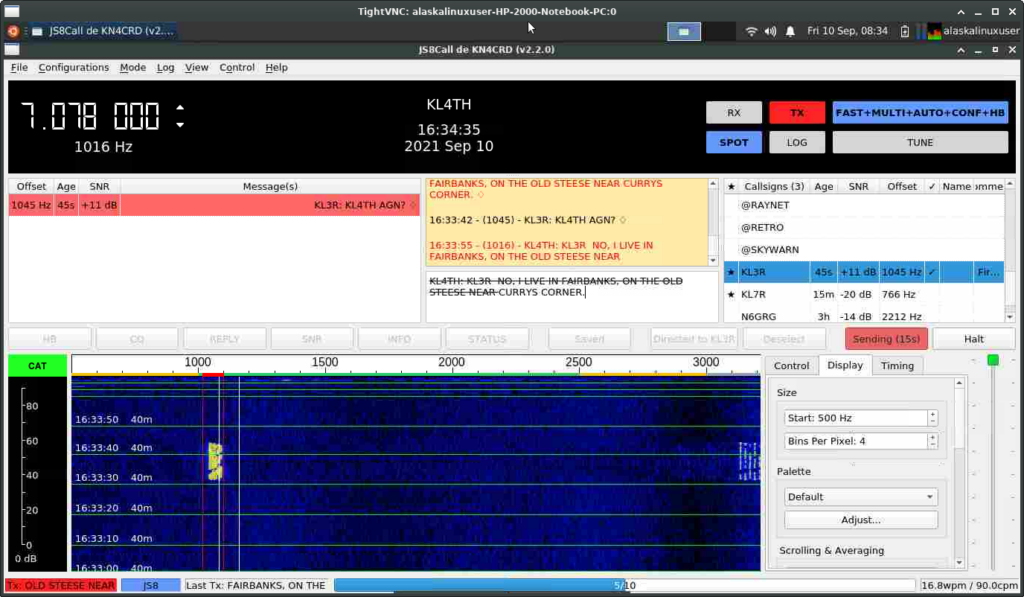
In my continued efforts to use digital modes with my tube radio, I’ve decided that FT-8 wasn’t my cup of tea. I’ve done a bit of FT-8, and that was really neat to learn about and make work, but to be honest, it wasn’t very fun to “do”. With FT-8, you click on someones CQ, and an automated process sends info back and forth until an automated popup asks you to log your QSO. But all I did was click on a call sign. Kind of interesting for antenna propagation and seeing how far you can be heard/hear, but not really a conversation, to say the least. I still do FT-8 from time to time, just for kicks and to test my setup, but it doesn’t capture my attention. More like something I’ll do on the side while really doing something else.
In contrast, I found JS8Call to be much more interactive and interesting. Built off of FT-8, but now changed for a different use case, it still uses tones in different frequencies to send and receive data. Just like FT-8, it is designed for digging signals out of noisy environments, and supports weak signals. Unlike FT-8, however, JS8Call is much more hands on.
If you can see the screenshot, then you can see that I’m having a keyboard to keyboard rag-chew with KL3R. In this sense alone, JS8Call is way more interesting than FT-8, since you can literally just chat with people. Like instant messaging, albeit a very slow “instant”, since it takes about 60 seconds to transmit a short paragraph. This leads to a lot of abbreviations and similar that we are used to seeing when people used phones that didn’t have keyboards.
The second really cool thing that JS8Call can do is relaying. If I want to chat with a friend of mine who is “across the pond” and I can’t get his or her signal directly, I can relay my signal through as many others as needed to get around the globe. E.g., I can relay a message for a person in Japan to relay the message to a person in Asia, to relay the message to a person in Germany, to relay the message to my British friend. That’s pretty cool. Of course, the method of communication slows down with each receive and transmit hop that has to be made, so it can be time intensive for a live chat, but it does work pretty well for the message storage system.
The message storage system is like text messaging or email. I think of it more like texting, since the messages tend to be shorter. However, it could be a longer message, like an email. So if you want to send a message to a friend in Kansas, I can store a message for them on my computer, and if they log on and call for all messages, then my machine will send them their message. You can relay these messages also, or even store them on someone else’s machine (if they have allowed that permission).
So, JS8Call has been a really interesting digital mode to try out, and I think I’ll be spending more time here. I could see using this “mesh” type of network with a special handheld “radio/cell phone” since it also works on low power and weak signals for a type of decentralized text messaging system. Just a thought.
Linux – keep it simple.